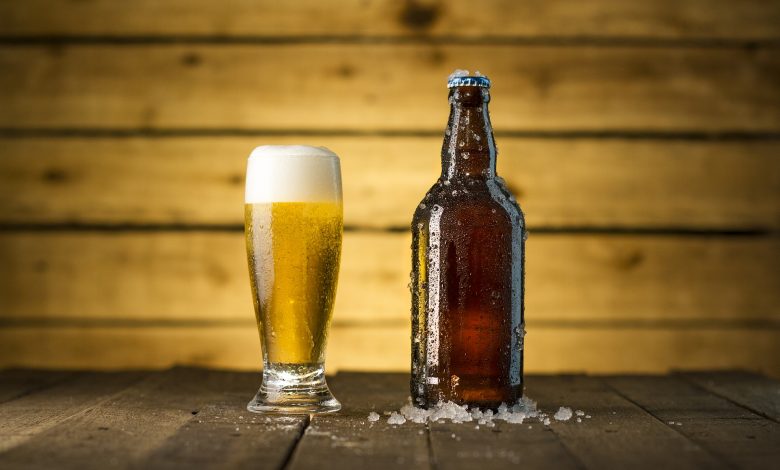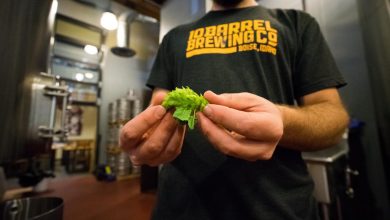How to Start a Microbrewery

Every year, breweries across the United States brew about 30 million barrels of beer; a total of about $25 billion dollars in sales is the turnover recorded by craft breweries annually. As per data released by The Brewers Association, Vermont leads from the front when it comes to sheer number of breweries with an impressive 11.5 breweries for every 100,000 residents. Montana and Maine stand in second position in this list. In 2018, when the overall beer sales by volume dipped across the country, sales by craft brewers (which includes microbreweries as per the definition here) sustained steady growth at the rate of four percent. In recent years, if craft beer has seen a production surge, the major share of the credit goes to microbreweries. The growth in the number of microbreweries has been phenomenal if you look at the statistics. From a mere 405 in the year 2000 to a mind boggling 4,522 in 2018, microbreweries have taken the beer industry by storm in no uncertain manner.
A veritable revolution has taken place in recent years in the craft beers arena, and the reason for it is that beer connoisseurs are tired of the mass- produced beer that often offers a flat, unexciting taste. To combat the typical beer available in stores, made with cheap ingredients that do nothing for the palate, entrepreneurs have been starting their own breweries where they can focus on the quality and the experience of the beverage they so painstakingly create and sell. The craft beer movement has been full of thrills and excitement so far, and the growing interest in the niche indicates that this is only the beginning of good things to come. If you are one of the beer lovers tired of mass-produced beer and are eager to introduce the world to your own special brew, then starting a microbrewery might just be the way for you to go.

How is a Microbrewery Different From a Traditional Brewery?
Before you get any further, you should know how a microbrewery differs from your regular brewery. A traditional brewery, what you could call a MACRObrewery, can produce several millions of barrels of beer per annum. To be designated a microbrewery, an outfit has a limit on how much beer it produces. At present, this limit stands at 1,5000 barrels per annum. That translates into 460,000 U.S. gallons. Also, microbreweries have to sell at least 25 percent of their beer on the premises itself. There is usually no attached bar or pub where the beer can be sold to customers. But microbreweries do supply beer to other pubs/bars in the locality, so locals can taste your specialty beer at their favorite bar if you supply it there.
Typically, microbreweries produce specialty beer varieties, the kind that are meticulously tried, tested, experimented with, and finally created by the microbrewery owner, who is usually a connoisseur of the beverage. Customers expect to find specialty beers at a microbrewery, although it may also sell other kinds of beer on premises.
Starting Your Microbrewery
One important thing to know is that microbreweries may be governed by different laws in different states, so read up on the laws in force in your state before doing anything else. The laws that you should be aware of are those enforced by the Alcohol and Tobacco Tax and Trade Bureau or TTB. There are both federal and state levels laws that apply on the alcohol industry, and you should be aware of both. Here is a general guideline on setting up the business.
Step 1: Business Structure
The very first thing to do is to figure out the right business structure, that is ownership and holding pattern, you want to go for. A sole proprietorship is what you will be setting it up as if you don’t pay attention to this aspect, but this would not give you the legal safeguards that a business typically needs. The best option for you would be to set up your microbrewery as a Limited Liability Company, or LLC. It is easy adn affordable to set up a business as an LLC, and at the same time, it affords protection to your personal assets and keeps them distinct from your business assets. You need to register your LLC in every state that you intend to do business in. For a microbrewery, that’s likely to be just the state where the actual set up is.

Step 2: Find a Location
Choosing the right location for your microbrewery is a critical step because it will determine how well you attract your clientele and what kind of customers (with what tastes/preferences) walk in. It also impacts your ability to expand at a future date. The rent payable, the size of the premises, and the amenities are many such factors that also go into determining if a place is an ideal location. Avoid overbuilding right at the outset expecting massive growth and expansion. Things may turn out differently, and then you will have a lot of capital locked up in the asset. Pay attention to zoning regulations as well and ensure you can start your brewery in the premises you have selected. Do this before you lease out the building so that you can avoid locking in deposit money in a location that you end up not being able to use.
Prepping the location for your brewery is another big cost item and also an area where a lot of attention and care needs to be taken. Most often you will need to relay the flooring so that it is resilient to the impact shock of beer production with massive equipment, barrels ,and what not moving across the premises. There is also a need to ensure the flooring is resistant to the temperature variations that will happen here and also to the acid corrosion that will inevitably happen when you spill beer. If the flooring is not acid resistant, you risk having it give way when you have a barrel of beer sitting on top of it – you definitely do not want this happening! Do not hesitate to spend on getting your premises ready for your brewing operations.
Step 3: Getting Your Brewer’s License
Before you can do this, you need to come up with a name for your microbrewery. Pick a name that is not already registered and that sounds great, a name that tells your customers something about your beer. Trademark the name so that no one else can start selling beer using your name.
Before you apply for a license, you need a statement showing how you will fund your business ad also documentation about your business premises. You must either already have the property in your name (if you are purchasing or you own it), be in the process of taking it out on lease, or already have it leased to you. Expect the licensing process to take anywhere from six months to a year to get done.

Step 4: Getting the Equipment
The right equipment is obviously one of the most critical expenses in this business, and getting it all is one of the most essential initial steps in setting up the business. You do get complete brewery equipment systems – all in a nice package. You can explore those or look at individual equipment pieces as well. The major equipment you will need includes:
- Piping
- Brew pumps and tubing
- Brew kettles/boilers
- Tanks for beer storage and fermentation
- Bottling equipment
- Cooling systems
Apart from equipment to brew and store your beer, you also need to furnish your brewery so that your customers can have their drinks right here on the premises. You need tables and chairs, maybe a counter, and other furnishing for this part of the business, as well as a cash register and the likes.
Once you have your premises and the equipment in place, take out a comprehensive insurance plan to cover it all efficiently. This is your capital, all locked into these assets; you want to ensure it is safeguarded in the best possible way!
Step 5: The Brewer’s Notice
You also need what is called a Brewer’s Notice from the TTB. You have to apply to the TTB for this notice with details of how you plan to package and label your beer and also explain how your brewing will impact the environment. To get this Brewer’s Notice, you will be asked to take a Brewer’s Bond, which will vary in size depending on how big your brewery is, production capacity wise, and many other factors. You may also need to take a state local brewer’s bond in some states. These bonds are insurance that the government takes from you to cover for missed tax payments, in the future.
The TTB may inspect your premises before they give you your Brewer’s Notice, and you may also have to explain your brewing process in detail for them to issue the notice to you. They also carry out a background check on all the key members of your business, so expect for this part of the process to take time.
Step 6: Getting a State Alcoholic Beverage Permit
This can vary from state to state, so you need to check thoroughly with the laws applicable to your state before you work on this. The office where you apply for this also varies from state to state. A good idea would be to apply for this as soon as you apply for the license so that the two are being processed at the same time and you can inaugurate your business as early as possible.
These licenses need you to decide what kind of business operations you intend to carry out – are you going to be a supplier or a retailer? A supplier license is what you need if you will be producing the beer and or/importing it or selling it wholesale. How much beer you will be producing may have a bearing on what kind of license you need to apply for as well.
Apart from this, you may also need other licenses and permits from the state. Again, check with the local authorities to find out if you need anything else.

Step 7: Form a Business and Marketing Plan
Once you have done all of these and you have all the necessary licenses and permits, you are ready to start your business. Put a sound business plan in place that outlines exactly what you intend to do now and in the future and how you intend to achieve it. Plan for distribution of your beer in the markets that you wish to target, and maybe tie up with major distributors to ensure that your wares reach the widest target audience possible.
Marketing plays a key role in ensuring your brand of beer gains more popularity and customers. In this niche, traditional marketing methods, such as TV and brochures, work well too, in particular because you are actively canvassing your neighborhood. Of course, that does not at all mean that you neglect social media or underestimate its influence. When you are promoting your brand, the focus needs to be on why your beer is so special and what makes it different from the mass-produced beer that you get in store. Hold Happy Hours frequently when your customers get to buy your beer at discounted prices. This helps bring in new customers, gets them acquainted with your beer, and hopefully make them lifetime clients.
One of the most effective and fun ways to market your brand is to have your customers enjoy a beer tasting experience. This is when a new customer gets to sip all your beer variants just to get an idea of what’s on offer. A talented, competent bartender ensures that customers have a great experience tasting your wares and also that they get a feel for why your beer is unique and needs to be given its due. They can introduce them to your beer varieties, tell them what goes into each and also what they should expect from each and why to make it all a thoroughly interesting and exciting experience.



